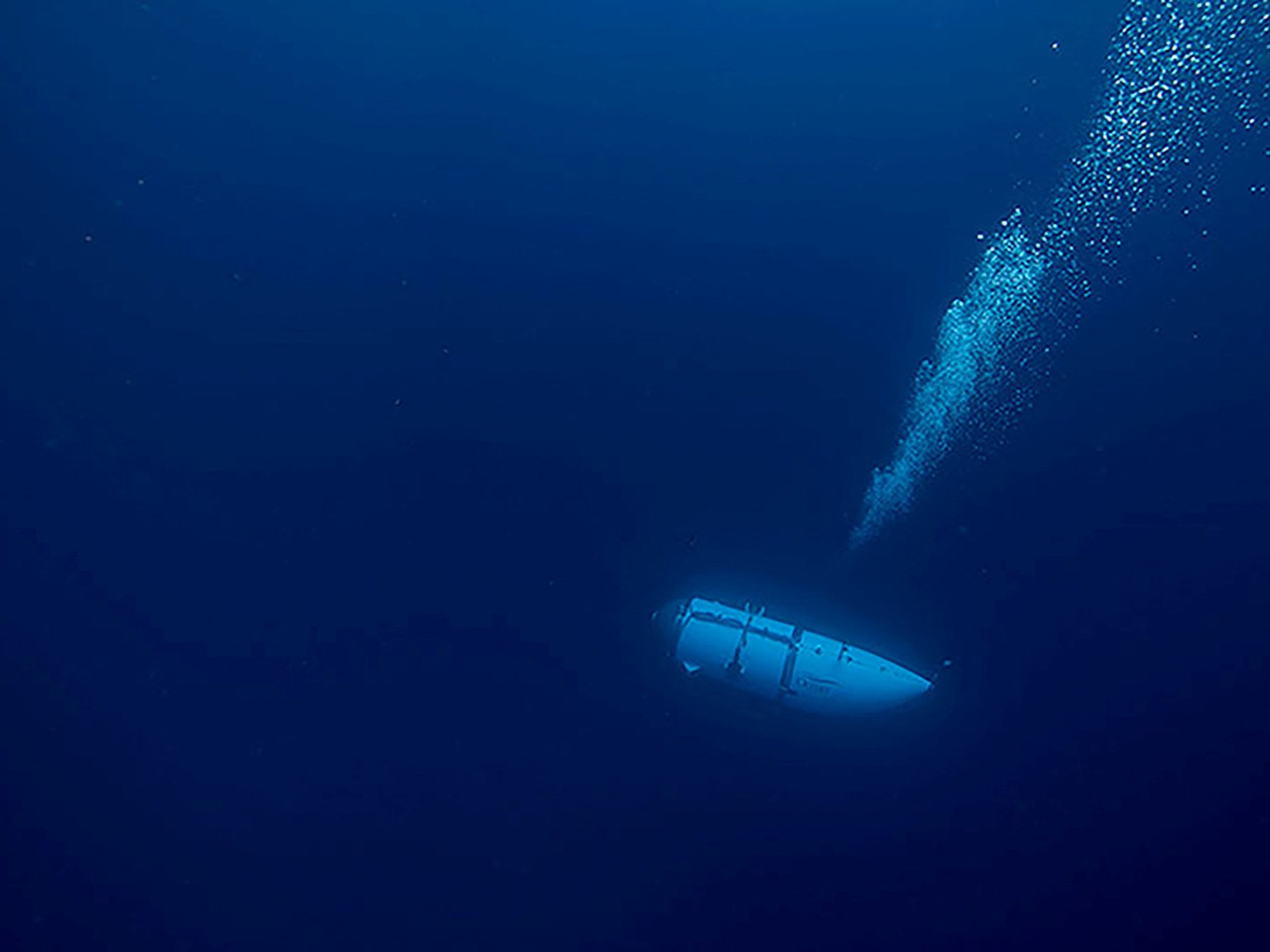
The explosion of a submarine excursion into the deep-sea wreck of the Titanic, killing five passengers on board, has raised questions about regulations overseeing such voyages — and whether the vehicle itself was safe.
On Friday, the company responsible for the tour, Oceangate Expeditions, defended the decision of its chief executive, Stockton Rush, who died in the drowning.
“Stockton was one of the smartest risk managers I’ve ever met. He was very risk-averse,” Oceangate co-founder Guillermo Sohenlein told Reuters news agency. “He was very committed to safety.”
But in the days since the submersible first disappeared, passengers have come forward to share stories of their mishaps and mishaps on the undersea expedition.
What did those on the board say?
Josh Gates, host of the Expedition Unknown TV series, shared his experiences aboard the same submersible, the Titan, which finally blew up on Sunday.
“Titan did not perform well on my dive,” Gates wrote in a tweet on Wednesday.
Titan, at the time, was preparing for Titanic’s maiden voyage, which lay 3.8 kilometers (12,500 ft) below the surface of the North Atlantic Ocean.
But even at the test stage, Gates sees cause for concern. “We had trouble controlling the thrusters,” he told US broadcaster NBC’s Today show on Thursday. “We had a computer problem. We had problems with comms. I felt like the sub needed more time and it needed more testing, frankly.”
Mike Reiss, a comic writer for The Simpsons, similarly experienced communication failures during his trips to Oceangate, including one that went down to the Titanic.
“I’ve been on four different dives with the Oceangate company,” Reiss told ABC News. “And each time they lost contact.”
But he was ambivalent about the issues: “It seems to be something baked into the system. I don’t blame Oceangate. I blame deep water for that.”
Security Alert ‘Ignored’
James Cameron – director of the Titanic film and a deep sea explorer himself – was more unequivocal in his criticism. In an interview with ABC News, he slammed the Titan’s carbon-fiber construction as “fundamentally flawed.”
“A lot of people in the community were very concerned about this sub,” Cameron said.
“And a number of leading players in the deep-dive engineering community even wrote to the company that what they were doing was too experimental to carry passengers and needed to be certified and so on.”
The Oscar-winning director drew a parallel between the Titan’s explosion and the cut corners that led to the wreck of the Titanic.
“I myself was struck by the analogy of the Titanic disaster, where the captain was repeatedly warned about the ice ahead of his ship, and yet he steamed at full speed,” Cameron said, adding that in both cases the warnings were “ignored”.
Do we know what happened?
The Titan submarine began its descent to the ocean floor on June 18. But about an hour and 45 minutes into its voyage, it lost contact with the surface.
United States Navy officials later confirmed that underwater acoustic equipment had captured “an anomaly consistent with an explosion or explosion” on the same day. It notified the US Coast Guard Command that day, but the search continued as the sound was definitely not from the Titan.
After a four-day search and rescue operation, the US Coast Guard announced Thursday that the Titan had suffered a “catastrophic explosion,” leaving wreckage on the Titanic’s bow.
Five people were killed: CEO Rush, Titanic researcher Paul-Henri Nargiolet, businessman Hamish Harding, and father and son Shahzada Daud and Suleiman Daud.
There were earlier concerns about Titan’s safety
In the wake of the submersible’s initial disappearance, the magazine The New Republic reported on documents from a 2018 breach-of-contract lawsuit, in which Oceangate sued a former employee for disclosing personal information.
However, the employee, David Lochridge, said he was acting as a whistleblower to ensure the safety of passengers and staff at Oceangate. In a counterclaim, Lochridge cited structural concerns with “large tears of carbon” from “constant pressure cycling”.
The New Republic also reported that Lochridge was met with “hostility” when he requested more information about the stress test results.
Rush, the late CEO of Oceangate, questioned Titan’s safety standards in a February 2019 blog post. In it, Rush objected to additional safety standards and regulations for deep-sea travel, calling it a barrier to technological progress.
“Bringing an external entity up to speed before putting each innovation to real-world testing is counterproductive to rapid innovation,” Rush said. He deplores the process of “bringing in outsiders who must first be educated before they are qualified to ‘validate’ any invention”.
Titan can prompt implosion control
Salvatore Mercogliano, a history professor at Campbell University in North Carolina, believes the Titan disaster could be a turning point in deep-sea regulation.
“We don’t have it [safety standards] Still with submarines,” Mercogliano told The Associated Press. “But I think that one of the lasting effects of this disaster is seeing it happen.”
Just as the Titanic disaster led to regulations requiring adequate lifeboats for all passengers, Mercogliano hypothesized that the Titan explosion might lead to similarly high standards.
Right now, he says, deep-sea adventures like the Titan voyage are less regulated than commercial space travel. This is, in part, because they take place in international waters outside the legal jurisdiction of countries like the United States.
Also, the submarine itself is towed to the search area, which means – even if it passes through US or Canadian waters – it is considered cargo, not subject to the same strict restrictions as the boat carrying it.
“There will come a time when you don’t think twice about getting into a submarine and going down to 13,000 feet,” Mercogliano said. “But we’re not there yet.”
Source link




